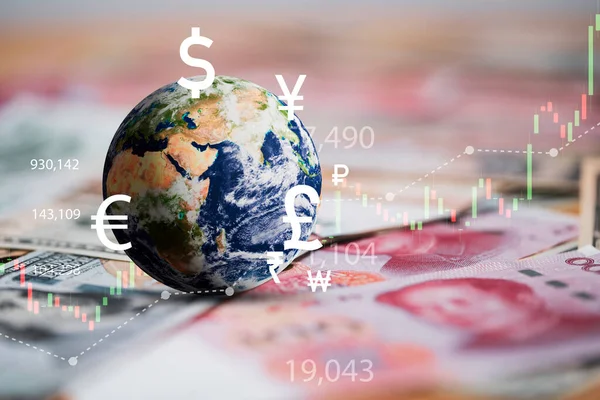In the fast-evolving world of finance, the emergence of stablecoins has ignited a significant transformation, particularly within the forex market. As these digital assets gain popularity, their potential to alter the landscape of foreign exchange trading is becoming increasingly apparent. From regulatory challenges to technological advancements, the integration of stablecoins is poised to reshape the traditional currency market. This article delves into the future of stablecoins in forex trading, exploring the dynamics of this burgeoning intersection between cryptocurrency and foreign exchange.
Navigating the Stablecoin Surge

The proliferation of stablecoins in recent years has been nothing short of meteoric. Designed to offer the best of both worlds—cryptocurrency’s innovation and fiat currency’s stability—stablecoins have become an attractive option for traders and investors alike. By pegging their value to less volatile assets such as the US dollar, stablecoins aim to provide a steady medium of exchange and a safe haven during market turbulence. As they become more ubiquitous, forex traders are beginning to recognize their potential for simplifying currency conversions, enabling faster settlements, and reducing transaction costs.
The rapid adoption, however, has not come without its challenges. One of the primary concerns is the trustworthiness of the underlying assets and the transparency of issuers. Moreover, liquidity varies across different stablecoin platforms, raising questions about their ability to maintain stability during periods of heightened forex market volatility. In response, some forex platforms have started to integrate stablecoins selectively, while others remain cautious, closely monitoring their performance and inherent risks.
Forex Markets Embrace Digital Shift

The forex market, traditionally dominated by central banks, financial institutions, and multinational corporations, is now witnessing a digital revolution. This shift is characterized by the following developments:
- Inclusion of Cryptocurrencies: Several forex brokers have begun to offer trading pairs that include cryptocurrencies and stablecoins, alongside traditional fiat currencies.
- Technological Upgrades: Enhanced trading platforms are being developed to facilitate the integration of digital assets with established forex trading systems.
- Global Participation: The borderless nature of stablecoins is attracting a wider, more diverse set of participants to the forex market.
- 24/7 Trading: Unlike traditional forex markets, cryptocurrency markets operate round-the-clock, offering continuous trading opportunities that could spill over into forex.
- Automation and AI: Forex trading is becoming more automated, with artificial intelligence (AI) playing a significant role in market analysis and trade execution.
The embrace of stablecoins could lead to a paradigm shift in how forex is traded, with an emphasis on speed, transparency, and accessibility.
Regulatory Horizon for Crypto Assets

As with any financial innovation, stablecoins are under the microscope of regulators worldwide. The regulatory horizon for these crypto assets is a patchwork of national and international guidelines that are continuously evolving. The primary concerns for regulators include:
- Consumer Protection: Ensuring that stablecoin holders are not exposed to undue risk.
- Financial Stability: Assessing the systemic implications of stablecoins on the broader financial system.
- Anti-Money Laundering (AML): Preventing the use of stablecoins for illicit activities.
- Tax Compliance: Defining how stablecoins should be taxed in comparison to traditional currencies.
- Legal Framework: Creating a legal framework that recognizes the unique nature of digital assets.
The outcome of ongoing regulatory discussions will significantly influence the role of stablecoins in forex trading, as well as their potential to act as a bridge between traditional and digital finance.
Impact on Traditional Currency Pairs

Stablecoins have the potential to disrupt traditional currency pairs in the forex market. They can:
- Offer an alternative to traditional fiat currencies, especially for countries with volatile currencies.
- Serve as an intermediary currency, reducing the need for direct currency pairs, thus simplifying trading.
- Encourage the entry of retail traders who may prefer the lower transaction costs and enhanced security features of stablecoins.
However, the dominance of well-established fiat currencies like the USD, EUR, and JPY is unlikely to be quickly overshadowed. The depth, liquidity, and widespread acceptance of these traditional currency pairs ensure their continued prominence in the global forex market.
Tech Innovation in Forex Trading

Technological innovation is central to the future of stablecoins in forex trading. Blockchain technology promises to provide:
- Immutable records of transactions, increasing transparency and trust.
- Smart contracts, enabling automated and conditional trades.
- Near-instantaneous settlement times, as opposed to the traditional T+2 settlement period in forex.
- Tokenization of assets, presenting new opportunities for fractional ownership and diversification.
Furthermore, the interoperability of blockchain networks could facilitate seamless cross-border transactions, which is a cornerstone of forex trading. Technology companies and financial institutions are investing heavily in blockchain research to harness these benefits fully.
Forecasting the Stablecoin Landscape

Looking ahead, the stablecoin landscape can be expected to evolve in the following ways:
- Growth and Diversity: A proliferation of stablecoin offerings with varying underlying assets and governance models.
- Consolidation: Market forces and regulatory pressures may lead to a consolidation of stablecoin providers.
- Integration: More forex platforms may integrate stablecoins as trusted digital intermediaries for international trade.
- Compliance Focus: Stablecoin issuers will likely prioritize regulatory compliance to remain viable in global markets.
- Technological Advances: Continued tech innovation will drive the functionality and efficiency of stablecoins in forex markets.
- Market Adaptation: Traditional financial players may adapt by issuing their own digital currencies or collaborating with stablecoin projects.
Comparison of Traditional Forex Trading and Stablecoin-Integrated Forex Trading
| Feature | Traditional Forex Trading | Stablecoin-Integrated Forex Trading |
|---|---|---|
| Settlement Time | T+2 | Near-instantaneous |
| Operational Hours | 24/5 | 24/7 |
| Transaction Costs | Variable (can be high) | Generally lower |
| Cross-Border Transactions | Often complex | Simplified |
| Transparency | Limited by privacy concerns | Enhanced by blockchain technology |
| Security | High | Potentially higher with blockchain |
The future of stablecoins in forex trading is a compelling narrative of innovation and adaptation. As stablecoins continue to gain traction, their integration into the forex markets promises a new era of efficiency, accessibility, and technological sophistication. However, this future is not without its uncertainties, with regulatory frameworks and market dynamics posing both challenges and opportunities. The coming years will be critical in determining whether stablecoins will become a mainstay in currency trading or remain a complementary asset within a more extensive financial ecosystem.

I think the 24/7 trading aspect of cryptocurrencies could change forex, but it’s still very uncertain.
I don’t trust these stablecoins. Too new and risky.
Doesn’t make sense to mix crypto with traditional forex. Too many problems can come up.
Stablecoins may lower costs, but what about regulation? Is it even possible?
I don’t think stablecoins will make a big impact. Traditional currencies like USD are too strong.
This article seems to hype stablecoins too much. Regulatory issues are a big problem that can’t be ignored.
I think stablecoins can make forex trading easier. But what about the hidden issues?
I agree that stablecoins offer lower transaction costs, but volatility is a big issue.
Forex market is already complex. Adding stablecoins will make it more confusing.
How can stablecoins be safe if their value depends on other assets? Not convinced.
Automated trading with AI sounds interesting, but isn’t that too advanced for most people?
The article explains well how stablecoins might change forex trading. It’s interesting to see how these digital assets could make trading faster and possibly cheaper. But I agree, there are still some risks and regulatory issues to think about.
The legal framework for stablecoins is not clear, making it too risky to depend on them.
Stablecoins sound good, but the trust in their value is not there yet. Too risky for now.
How can stablecoins reduce transaction costs? This doesn’t sound realistic to me.